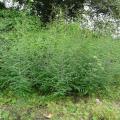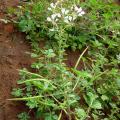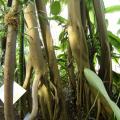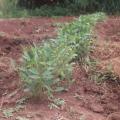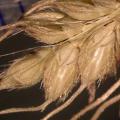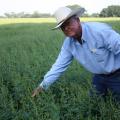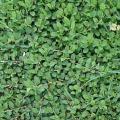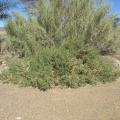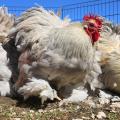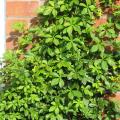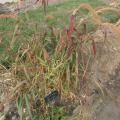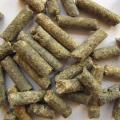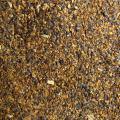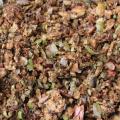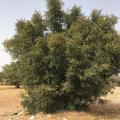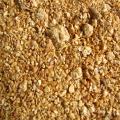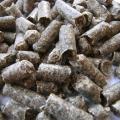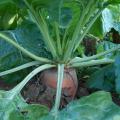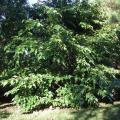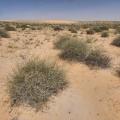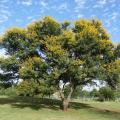Feedipedia news
After 13 years, it is time for the website to be upgraded! Before we start, we need your input.
Explore Feedipedia
|
The prickly sesban (Sesbania bispinosa (Jacq.) W. F. Wight) is a fast-growing... Read more |
African spiderflower (Gynandropsis gynandra L.) is an tropical annual herb... Read more |
The banyan tree (Ficus benghalensis L.) is a large evergreen tree native of Asia... Read more |
|
Bambara groundnut (Vigna subterranea (L.) Verdc.) is an annual, creeping... Read more |
Cockspur grain is the seed of the cockspur grass (Echinochloa crus-galli (L.) P... Read more |
Alyce clover (Alysicarpus vaginalis (L.) DC.) is a highly variable perennial or... Read more |
|
Alyce clover (Alysicarpus vaginalis (L.) DC.) is a highly variable perennial or... Read more |
Ganna bush (Salsola aphylla) is a succulent, halophytic shrub native of southern... Read more |
Feather meal results from the processing of the feathers obtained after poultry... Read more |
|
The voqui colorado (Cissus striata Ruiz & Par. or Clematicissus striata... Read more |
Foxtail millet (Setaria italica (L.) P. Beauv.) is one of the oldest cultivated... Read more |
The processing of potato (Solanum tuberosum L.) for food and for the manufacture... Read more |
|
Rapeseed meal, called canola meal in North America, Australia and some other countries,... Read more |
Apple pomace (Malus domestica Borkh.) is the solid residue that remains after... Read more |
Argan (Argania spinosa (L.) Skeels) is a thorny tree from the arid and semi-arid... Read more |
|
Soybean meal is the most important protein source used to feed farm animals. It... Read more |
Sugarbeet pulp is the fibrous, energy rich by-product resulting from the water extraction... Read more |
Fodder beet (Beta vulgaris subsp. vulgaris L.) is a biennial plant... Read more |
|
White mulberry (Morus alba L.) is a high-yielding pantropical and subtropical... Read more |
Desert grass (Panicum turgidum Forssk.) is a coarse, tussocky, tropical and... Read more |
Sweet thorn (Acacia karroo Hayne or Vachellia karroo (Hayne) Banfi... Read more |
Pages
Recent resources
 Opinion paper: Phasing out of the aid provided to the livestock sector during expectedly recurrent emergencies
- Makkar, 2024. animal
Opinion paper: Phasing out of the aid provided to the livestock sector during expectedly recurrent emergencies
- Makkar, 2024. animal
Open access opinion paper that makes a case that the emergency aid do more harm than good to African countries. It is valid for all the fields of agriculture but has direct consequence for animal agriculture. The context here is the aid provided during emergencies that are foreseeable recurrent.
The role of livestock in food security, poverty reduction and wealth creation in West Africa
- Molina-Flores et al., 2020. Food and Agriculture Organization of the United Nations Accra, 2020
Livestock is key to 377 million people in West Africa and in some countries, up to 60% of the population is involved in livestock production. The demand for animal products is increasing with population growth, urbanization, growing middle class, and due to shifting consumer preferences towards animal products. To meet this growing demand, countries in West Africa must engage in accelerated sustainable livestock production undertaking. Livestock development is key to eradicate hunger and poverty. This book attempts to provide up-to-date, and reliable information on the potentials, opportunities, and challenges of the livestock subsector in West Africa.
Pulses and their by-products as animal feed
- Sherasia et al., 2017. In: Calles, T.; Makkar, H. P. S. (Eds), FAO, Food and Agriculture Organization of the United Nations, Rome, Italy
This document provides a state-of-the-art review of the recent research (published and unpublished) on the use of pulses and their by-products as animal feed. It aims at raising awareness on the use of pulses and their by-products. It highlights the nutritional role of pulses and pulse by-products as animal feed and is a contribution to the legacy of the 2016 International Year of Pulses. This document will further enhance the use of these feed resources in other continents, besides Asia, where many pulse by-products are simply dumped. It is also expected that the synthesis presented contributes to make the use of pulses and their by-products as animal feed more efficient. This document will be useful for extension workers, researchers, feed industry, policy-makers and donors alike.











